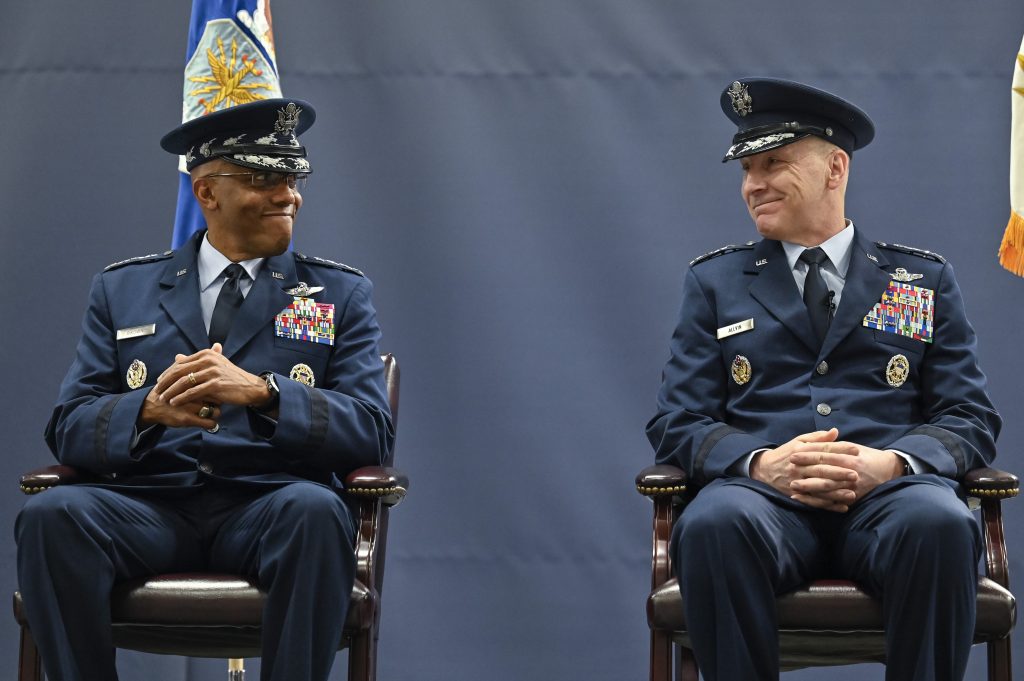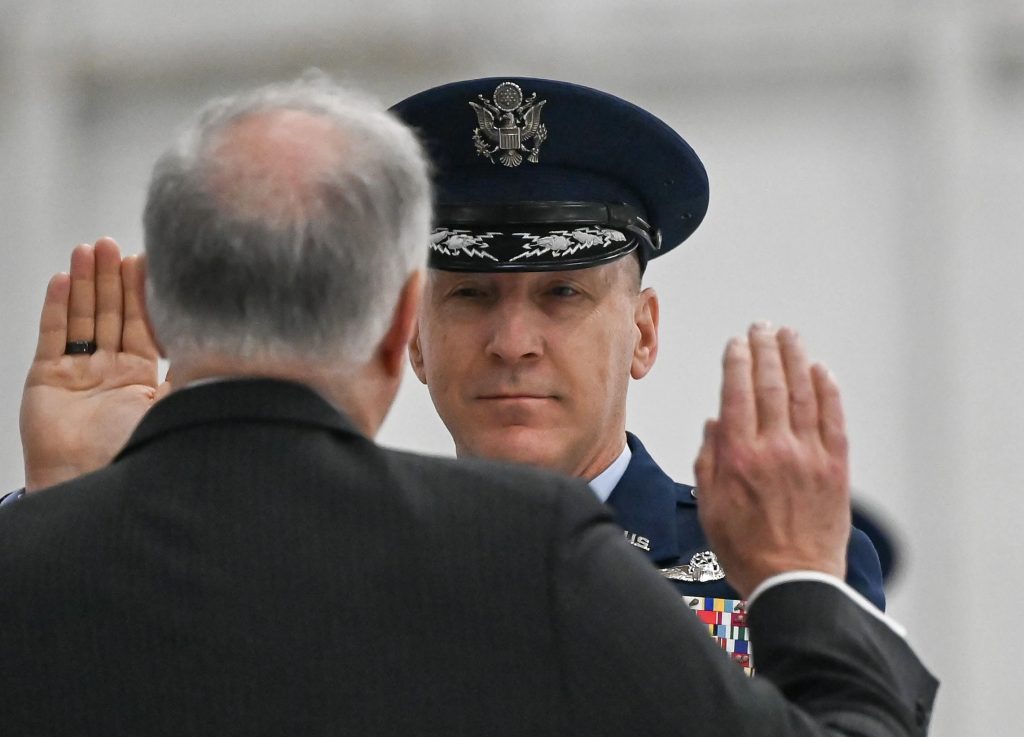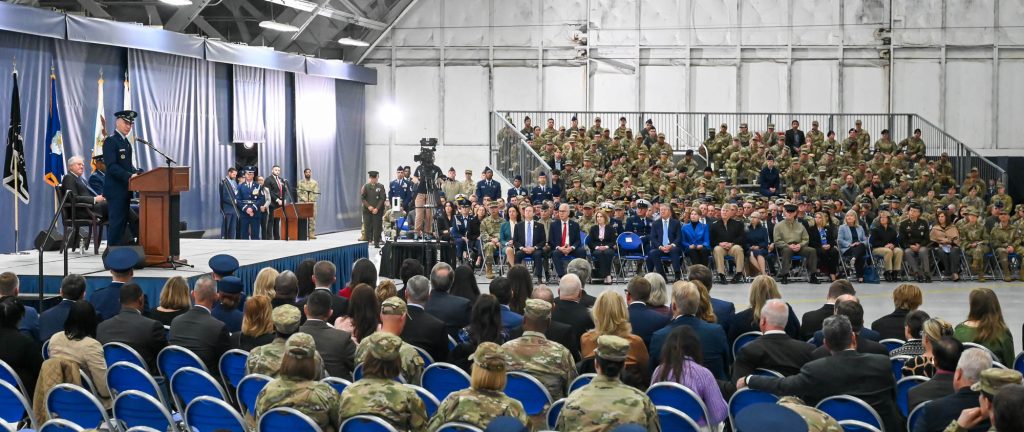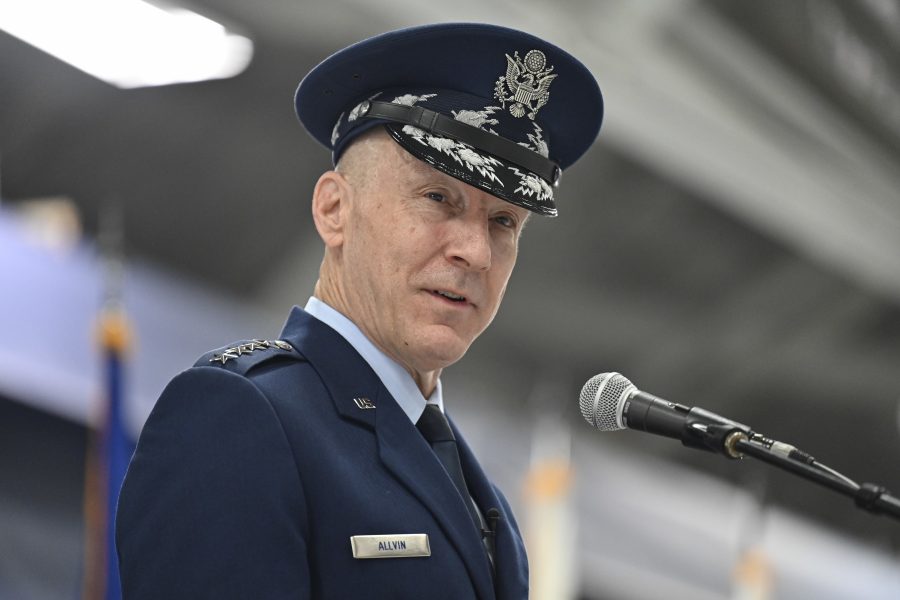JOINT BASE ANDREWS, Md.—The Air Force’s new Chief of Staff vowed to modernize the service’s capabilities with urgency, citing the need to deter the growing challenge from China in his first public address since taking on the top job.
“The evolving character of war is one that privileges speed and tempo, agility, range, flexibility, resilience, and precise lethality,” Gen. David W. Allvin said Nov. 17 at a welcome ceremony in his honor. “These elements run deep in the DNA of airpower, and it is our responsibility to the Joint Force and the nation to bring these to bear to meet our pacing challenge.”
Allvin became the service’s 23rd Chief of Staff chief on Nov. 2, hours after being confirmed by the Senate in a 95-1 vote, but he was ceremonially sworn in again with more pomp and circumstance and gave his first speech.
In his address, Allvin built on his first message to Airmen released a few days after becoming Chief in which he pledged to “follow through” on the initiatives put in place by Gen. Charles Q. Brown Jr., his predecessor as CSAF before he was elevated to Chairman of the Joint Chiefs of Staff, as well as other previous leaders.
“We have accelerated change, and now must turn this momentum into outcomes. The clock is ticking and the time to execute is now,” Allvin said.
Allvin was nominated to replace Brown over the summer, but his confirmation had been delayed by Sen. Tommy Tuberville’s blanket hold on military nominations to protest the Department of Defense’s reproductive health policies. As vice chief under Brown, however, Allvin took over as acting chief when Brown became Chairman, and the two men emphasized their alignment in assessing the needs of the Air Force.
“I couldn’t ask for a better person to follow through and build upon the many ideas we share,” Brown said, noting Allvin’s diverse career path—a mobility and test pilot by trade, he has command experience of aerial refueling, mobility, training, and expeditionary units, as well time on staff at U.S. European Command and the Joint Staff.
“When you look at most officers’ careers, there’s a typical logical flow of progression and specialization,” Brown said. “Dave has none of those. He didn’t follow a path, but he charted a way. It’s all provided him a wide foundation to drawn upon to lead the Air Force as it faces complex and volatile global security environment.”

In a speech in Hangar Three next to the flight line at Andrews during an unseasonably warm November morning, Allvin reiterated to the crowd of defense dignitaries that the Air Force needed to adapt—and fast.
“Among the biggest challenges in pursuit of our destination is time, as the future rushes toward us at a breathtaking pace,” Allvin said.
The new Chief, who has spent much of the last decade as a Pentagon leader, said the White House, the Office of the Secretary of Defense, the Joint Staff, and the Department of the Air Force all had “strong” alignment in their national security goals.
“The precise path ahead of us may be opaque, but the general direction is clear,” Allvin said.
Despite the current conflagration in the Middle East in the wake of the Israel-Hamas war and Russia’s invasion of Ukraine, the U.S. government is focused on China as its long-term challenge.
“The current environment is one in which our national interests are threatened in a way we have not seen in decades,” Allvin said.
Allvin’s ceremony was led by Secretary of the Air Force Frank Kendall, who has made modernization to face China his top priority.
“[There is] a theme in the remarks from Gen. Brown and Gen. Allvin and myself,” Kendall said. “And that theme is a sense of urgency. We are running out of time, and we have to make changes that we need to stay competitive, particularly with our pacing challenge.”

Allvin said the Air Force is particularly well-suited to adapt to a Pacific, near-peer threat given that airpower has long been one of America’s most flexible ways to employ its military might.
The Air Force, a service whose leaders have often spent thousands of hours flying hundreds of miles per hour, could not be lumbering in its moderation efforts—nor should it attempt to be perfect, he said.
The Air Force must “not be shackled by a false perception that we must have a flawless plan with precision in the prediction of its outcome before executing,” Allvin said. “Instead, we must solve for agility—initiating action in the right direction and building in the flexibility to learn and adjust while in motion.”

